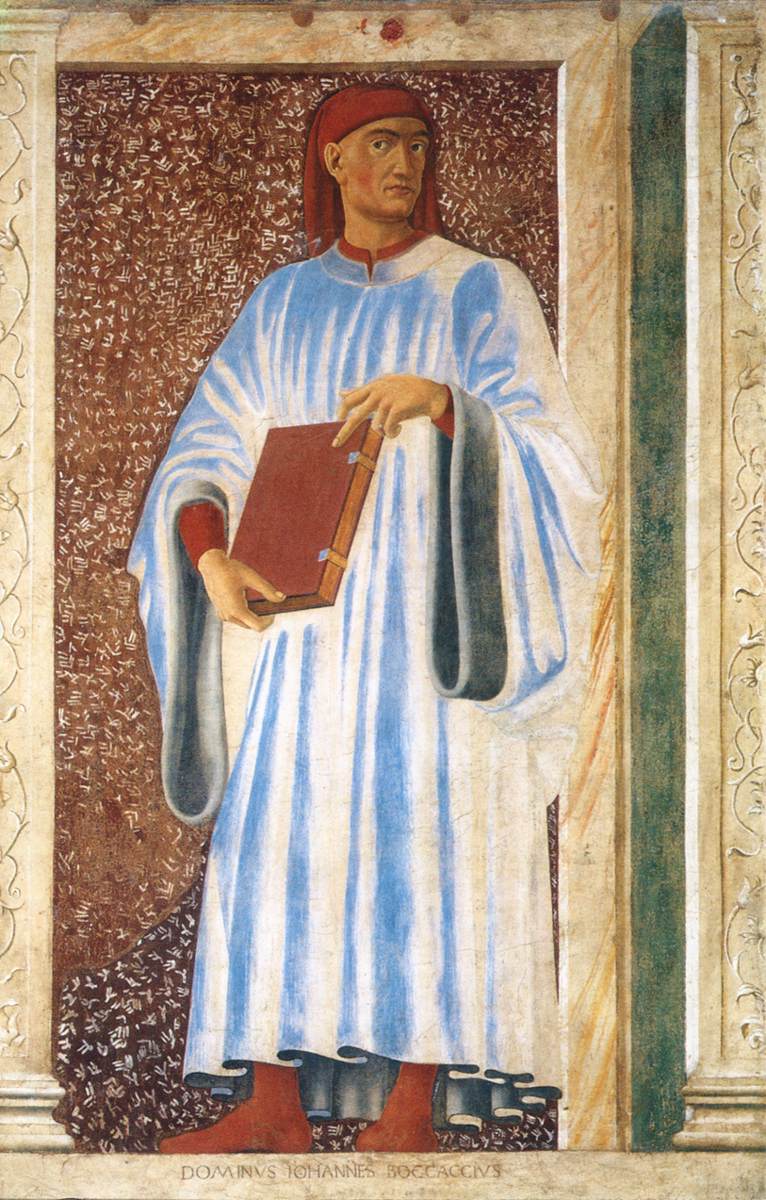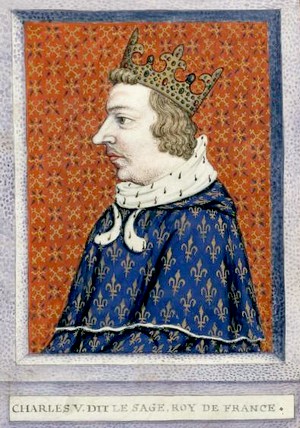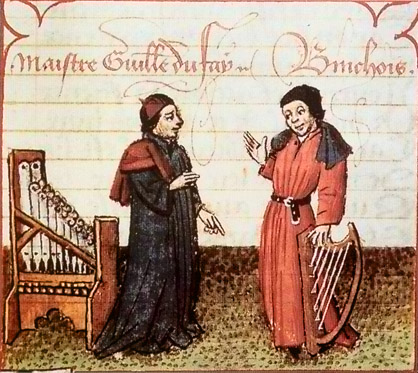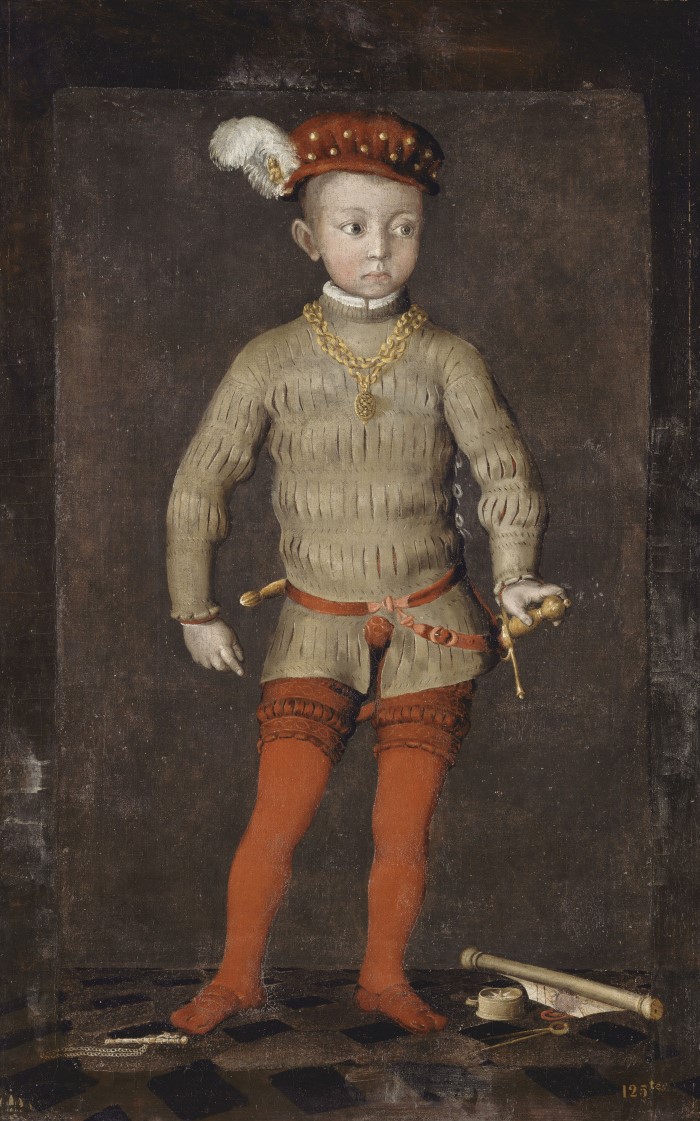|
Margaret Of Angoulême
Marguerite de Navarre (, ''Marguerite d'Alençon''; 11 April 149221 December 1549), also known as Marguerite of Angoulême and Margaret of Navarre, was a princess of France, Duchess of Alençon and Berry, and Queen of Navarre by her second marriage to King Henry II of Navarre. Her brother became King of France, as Francis I, and the two siblings were responsible for the celebrated intellectual and cultural court and salons of their day in France. Marguerite is the ancestress of the Bourbon kings of France, being the mother of Jeanne d'Albret, whose son, Henry of Navarre, succeeded as Henry IV of France, the first Bourbon king. As an author and a patron of humanists and reformers, she was an outstanding figure of the French Renaissance. Samuel Putnam called her "The First Modern Woman". Early life Marguerite was born in Angoulême on 11 April 1492, the eldest child of Louise of Savoy and Charles, Count of Angoulême. Her father was a descendant of Charles V, and would thus hav ... [...More Info...] [...Related Items...] OR: [Wikipedia] [Google] [Baidu] |
Queen Consort Of Navarre
This is a list of those men and women who have been royal consorts of the Kingdom of Navarre. Because the laws of Navarre did not prohibit women from inheriting the crown, on a number of occasions, the Kingdom was inherited or transmitted via heiresses. Thus, whilst most of the royal consorts were women, who held the title of queen consort, several were men, who by their marriages held the title of king, and who are given regnal designations in the lists of Navarrese kings and queens regnant. Most of these men, although granted power through marriage rather than through inheritance, nonetheless were significant or dominant in their marriages and the rule of the country; indeed, one king by marriage, John II of Aragon, John II of Navarre (who would late in life also become John II of Aragon by rightful inheritance), husband of Blanche I of Navarre, refused to surrender the crown following her death to their son, Charles of Viana, the rightful heir to the Kingdom, instead retaining ... [...More Info...] [...Related Items...] OR: [Wikipedia] [Google] [Baidu] |
Berry (province)
The Duchy of Berry (; ; ) was a former province located in central France. It was a province of France until departments replaced the provinces on 4 March 1790, when Berry became divided between the ''départements'' of Cher (Upper Berry) and Indre (Lower Berry). History Berry is notable as the birthplace of several kings and other members of the French royal family, and was the birthplace of the knight Baldwin Chauderon, who fought in the First Crusade. In the Middle Ages, Berry became the center of the Duchy of Berry's holdings. It is also known for an illuminated manuscript produced in the 14th–15th century called '' Les Très Riches Heures du Duc de Berry''. In later times, the writer George Sand spent much of her life at her Berry estate in Nohant, and Berry's landscape and specific culture figure in much of Sand's writings. The Duchy was governed by the Duke/Duchess of Berry, who after 1601 was a senior member of the French royal family. The title of 'Duke of Berry ... [...More Info...] [...Related Items...] OR: [Wikipedia] [Google] [Baidu] |
Boccaccio
Giovanni Boccaccio ( , ; ; 16 June 1313 – 21 December 1375) was an Italian writer, poet, correspondent of Petrarch, and an important Renaissance humanist. Born in the town of Certaldo, he became so well known as a writer that he was sometimes simply known as "the Certaldese" and one of the most important figures in the European literary panorama of the fourteenth century. Some scholars (including Vittore Branca) define him as the greatest European prose writer of his time, a versatile writer who amalgamated different literary trends and genres, making them converge in original works, thanks to a creative activity exercised under the banner of experimentalism. His most notable works are ''The Decameron'', a collection of short stories, and '' On Famous Women''. ''The Decameron'' became a determining element for the Italian literary tradition, especially after Pietro Bembo elevated the Boccaccian style to a model of Italian prose in the sixteenth century. Boccaccio wr ... [...More Info...] [...Related Items...] OR: [Wikipedia] [Google] [Baidu] |
Cognac, France
Cognac (; Saintongese dialect, Saintongese: ''Cougnat''; ) is a communes of France, commune in the Charente departments of France, department, southwestern France. Administratively, the commune of Cognac is a subprefectures in France, subprefecture of the Charente department. Name The name is believed to be formed from individual masculine name -Connius, Gallic name, and the suffix -acum, which would correspond to the "domain of Connius". History The town of Cognac was unknown before the ninth century, when it was fortified. During the Hundred Years' War, the town continually changed sides, according to the tides of war. In 1526, it lent its name to the War of the League of Cognac, the military alliance established by King Francis I of France to fight against the House of Habsburg. As a benefit of the War League of Cognac, King Francis I granted to the town of Cognac the commercial right to participate in the salt trade conducted along the river Charente, from which regional ... [...More Info...] [...Related Items...] OR: [Wikipedia] [Google] [Baidu] |
Louis XII
Louis XII (27 June 14621 January 1515), also known as Louis of Orléans was King of France from 1498 to 1515 and King of Naples (as Louis III) from 1501 to 1504. The son of Charles, Duke of Orléans, and Marie of Cleves, he succeeded his second cousin once removed and brother-in-law, Charles VIII of France, Charles VIII, who died childless in 1498. Louis was the second cousin of King Louis XI, who compelled him to marry the latter's disabled and supposedly Sterility (physiology), sterile daughter Joan of France, Duchess of Berry, Joan. By doing so, Louis XI hoped to extinguish the House of Valois-Orléans, Orléans cadet branch of the House of Valois. When Louis XII became king in 1498, he had his marriage with Joan annulled by Pope Alexander VI and instead married Anne, Duchess of Brittany, the widow of Charles VIII. This marriage allowed Louis to reinforce the personal Union of Brittany and France. Louis of Orléans was one of the great feudal lords who opposed the French mona ... [...More Info...] [...Related Items...] OR: [Wikipedia] [Google] [Baidu] |
Charles VIII Of France
Charles VIII, called the Affable (; 30 June 1470 – 7 April 1498), was King of France from 1483 to his death in 1498. He succeeded his father Louis XI at the age of 13. His elder sister Anne acted as regent jointly with her husband Peter II, Duke of Bourbon until 1491, when the young king turned 21 years of age. During Anne's regency, the great lords rebelled against royal centralisation efforts in a conflict known as the Mad War (1485–1488), which resulted in a victory for the royal government. In a remarkable stroke of audacity, Charles married Anne of Brittany in 1491 after she had already been married by proxy to the Habsburg Holy Roman Emperor Maximilian I in a ceremony of questionable validity. Preoccupied by the problematic succession in the Kingdom of Hungary, Maximilian failed to press his claim. Upon his marriage, Charles became administrator of Brittany and established a personal union that enabled France to avoid total encirclement by Habsburg territories. To se ... [...More Info...] [...Related Items...] OR: [Wikipedia] [Google] [Baidu] |
Primogeniture
Primogeniture () is the right, by law or custom, of the firstborn Legitimacy (family law), legitimate child to inheritance, inherit all or most of their parent's estate (law), estate in preference to shared inheritance among all or some children, any illegitimate child or any collateral relative. In most contexts, it means the inheritance of the firstborn son (agnatic primogeniture); it can also mean by the firstborn daughter (matrilineal primogeniture), or firstborn child (absolute primogeniture). Its opposite analogue is partible inheritance. Description The common definition given is also known as male-line primogeniture, the classical form popular in European jurisdictions among others until into the 20th century. In the absence of male-line offspring, variations were expounded to entitle a daughter or a brother or, in the absence of either, to another collateral relative, in a specified order (e.g., male-preference primogeniture, Salic primogeniture, semi-Salic primogenitu ... [...More Info...] [...Related Items...] OR: [Wikipedia] [Google] [Baidu] |
Charles V Of France
Charles V (21 January 1338 – 16 September 1380), called the Wise (; ), was King of France from 1364 to his death in 1380. His reign marked an early high point for France during the Hundred Years' War as his armies recovered much of the territory held by the English and successfully reversed the military losses of his predecessors. Charles became regent of France when his father John II of France, John II was captured by the English at the Battle of Poitiers in 1356. To pay for the defense of the kingdom, Charles raised taxes. As a result, he faced hostility from the French nobility, nobility, led by Charles II of Navarre, Charles the Bad, List of Navarrese monarchs, King of Navarre; the opposition of the French bourgeoisie, which was channeled through the Estates General (France), Estates-General led by Étienne Marcel; and with a peasant revolt known as the Jacquerie. Charles overcame all of these rebellions, but in order to liberate his father, he had to conclude the Treaty ... [...More Info...] [...Related Items...] OR: [Wikipedia] [Google] [Baidu] |
Samuel Putnam
Samuel Putnam (October 10, 1892 – January 15, 1950) was an American translator and scholar of Romance languages. He authored ''Paris Was Our Mistress'', a memoir on writers and artists associated with the American ex-patriate community in Paris in the 1920s and early 1930s. Work Putnam's most famous work is his 1949 English translation of Miguel de Cervantes' ''Don Quixote''. It is the first version of the work in contemporary English; archaic language remains, but less than in earlier English versions. The language is formal when spoken by educated characters, but seldom old-fashioned, while the peasant characters speak in colloquial modern English. Putnam worked on the translation for 12 years. He also published a companion volume, ''The Portable Cervantes'', which included an abridged version of his translation, in addition to English versions of two of Cervantes' ''Novelas ejemplares''. Daniel Eisenberg, comparing translations of ''Don Quixote'', called Putnam's translat ... [...More Info...] [...Related Items...] OR: [Wikipedia] [Google] [Baidu] |
French Renaissance
The French Renaissance was the cultural and artistic movement in France between the 15th and early 17th centuries. The period is associated with the pan-European Renaissance, a word first used by the French historian Jules Michelet to define the artistic and cultural "rebirth" of Europe. Notable developments during the French Renaissance include the spread of humanism, early exploration of the "New World" (as New France by Giovanni da Verrazzano and Jacques Cartier); the development of new techniques and artistic forms in the fields of printing, architecture, painting, sculpture, music, the sciences and literature; and the elaboration of new codes of sociability, etiquette and discourse. The French Renaissance traditionally extends from (roughly) the 1494 French invasion of Italy during the reign of Charles VIII until the 1610 death of Henry IV, with an apex during the 1515–1559 reigns of Francis I and Henry II. This chronology notwithstanding, certain artistic, tec ... [...More Info...] [...Related Items...] OR: [Wikipedia] [Google] [Baidu] |
Henry IV Of France
Henry IV (; 13 December 1553 – 14 May 1610), also known by the epithets Good King Henry (''le Bon Roi Henri'') or Henry the Great (''Henri le Grand''), was King of Navarre (as Henry III) from 1572 and King of France from 1589 to 1610. He was the first monarch of France from the House of Bourbon, a cadet branch of the Capetian dynasty. He pragmatically balanced the interests of the Catholic and Protestant parties in France, as well as among the European states. He was assassinated in Paris in 1610 by a Catholic zealot, and was succeeded by his son Louis XIII. Henry was baptised a Catholic but raised as a Huguenot in the Protestant faith by his mother, Queen Jeanne III of Navarre. He inherited the throne of Navarre in 1572 on his mother's death. As a Huguenot, Henry was involved in the French Wars of Religion, barely escaping assassination in the St. Bartholomew's Day massacre. He later led Protestant forces against the French royal army. Henry inherited the thro ... [...More Info...] [...Related Items...] OR: [Wikipedia] [Google] [Baidu] |
Jeanne D'Albret
Jeanne d'Albret (, Basque language, Basque: ''Joana Albretekoa''; Occitan language, Occitan: ''Joana de Labrit''; 16 November 1528 – 9 June 1572), also known as Jeanne III, was Queen of Navarre from 1555 to 1572. Jeanne was the daughter of Henry II of Navarre and Margaret of Angoulême (and thus the niece of Francis I of France). In 1541, she married William, Duke of Jülich-Cleves-Berg. The marriage was annulled in 1545. Jeanne married a second time in 1548, to Antoine de Bourbon, Duke of Vendôme. They had two surviving children, Henry IV of France, Henry and Catherine de Bourbon, Catherine. When her father died in 1555, Jeanne and Antoine ascended the Navarrese throne. They reigned as joint rulers until Antoine died in 1562 from wounds suffered while besieging Protestant-held Rouen during the French Wars of Religion. After her public conversion to Calvinism in 1560 however, Jeanne, on the other hand, had become the acknowledged spiritual and political leader of the French ... [...More Info...] [...Related Items...] OR: [Wikipedia] [Google] [Baidu] |









